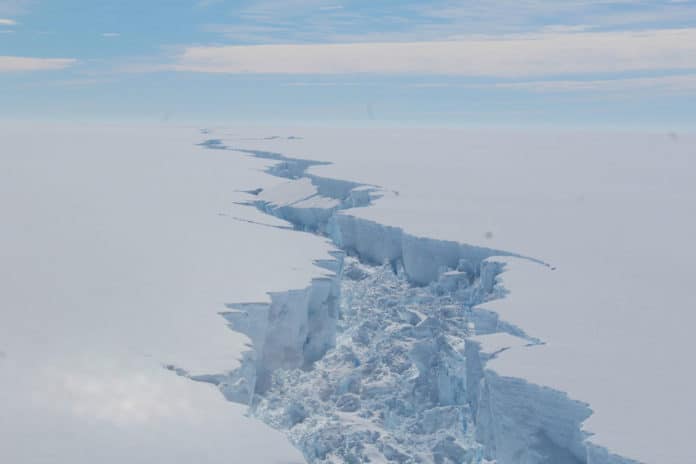The vast Larsen Ice Shelf, twice the size of Wales, attracted global media attention. It is the largest remaining ice shelf on the Antarctic Peninsula. To predict the future of Larsen C, it is essential to understand what is causing it to melt at the surface.
A new study by scientists from British Antarctic Survey (BAS) has used computer modeling sophisticated by direct observations of the Antarctic Peninsula region. This modeling allowed scientists to simulate patterns of surface melting on Larsen C under different atmospheric conditions. They were also able to determine which of these was most significant.
Solar radiation is currently the major cause of surface melting, according to the study. Warm, dry winds known as foehn winds and cloud characteristics were the second and third most important drivers of melting, respectively. Large-scale weather patterns, which help create these conditions, have also been identified as significant contributors.
With changing climate and temperature rise, the conditions that cause surface melting are more likely to occur as surface temperatures will be at the melting point more often. To improve our ability to anticipate the future of Larsen C and guide measures to prevent the effects of climate change, we need to figure out which patterns are most crucial for driving melting at the ice shelf surface.
Dr. Ella Gilbert, a regional climate modeler at BAS and lead author of this study, says: “We should all care about ice shelves because their loss affects us all. When ice shelves collapse, it’s like pulling the cork out of a bottle. The glaciers that were previously held back can flow unrestrained into the ocean, adding to global sea levels. If we know what’s making the ice shelf melt now, we can predict the future better, and ultimately that will help us prepare and adapt to future change.”
Journal Reference:
- E. Gilbert et al. A 20-year study of melt processes over Larsen C Ice Shelf using a high-resolution regional atmospheric model: Part 2, Drivers of surface melting. DOI: 10.1029/2021JD036012
